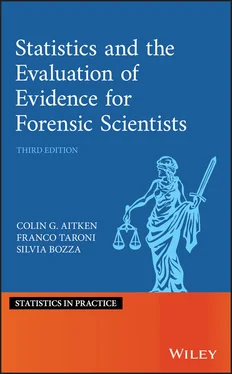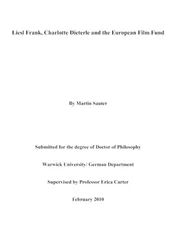The possibility that subjective degrees of belief may be represented in terms of betting rates in lotteries or in the relative frequency of balls in an urn is often put forward as support for an argument that requires subjective degrees of belief to satisfy the laws of probability. This requirement is satisfied with the notion of coherence that has the normative role of forcing people to be honest and to make the best assessment of their own measure of belief.
De Finetti (1931a) showed that coherence, a simple economic behavioural criterion, implies that a given individual should avoid a combination of probability assignments that is guaranteed to lead to loss. All that is needed to ensure such avoidance is for uncertainty to be represented and manipulated using the theory of probability. In this context, the possibility of representing subjective degrees of belief in terms of betting odds is often forwarded as part of a line of argument to require that subjective degrees of belief should satisfy the laws of probability. This line of argument takes two parts. The first is that betting odds should be coherent, in the sense that they should not be open to a sure‐loss contract. The second part is that a set of betting odds is coherent if and only if it satisfies the laws of probability. The Dutch Book argument encompasses both parts: the proof that betting odds are not open to a sure loss contract if and only if they are probabilities is called the Dutch book theorem . Thus, if an individual translates their state of knowledge in such a manner that the assigned probabilities, as a whole, do not respect the laws of probability (standard probability axioms), then their assignments are not coherent. In this context, such incoherence is also called logical imprudence . An example can be found in Section 1.7.6.
The outcome of the drawing of a ball from the urn was called an event. If the ball was black, the event was denoted  . If the ball was white, the event was denoted
. If the ball was white, the event was denoted  . It was not certain which of the two events would happen: would the ball be black, event
. It was not certain which of the two events would happen: would the ball be black, event  , or white, event
, or white, event  ? The degree of uncertainty of the event (
? The degree of uncertainty of the event (  or
or  ) was measured by the proportion of balls of the appropriate colour (
) was measured by the proportion of balls of the appropriate colour (  or
or  ) in the urn and this proportion was called the probability of the event (
) in the urn and this proportion was called the probability of the event (  or
or  ). In general, for an event
). In general, for an event  ,
,  denotes the probability that
denotes the probability that  occurs.
occurs.
As underlined by Lindley (2014), events may have happened (past events), may be relevant at the present time (present events), or may happen in the future (future events).
There are some things that you [  ] know to be true, and others that you know to be false; yet, despite this extensive knowledge that you have, there remain many things whose truth or falsity is not known to you. We say that you are uncertain about them. You are uncertain, to varying degrees, about everything in the future; much of the past is hidden from you; and there is a lot of the present about which you do not have full information. (p. xi)
] know to be true, and others that you know to be false; yet, despite this extensive knowledge that you have, there remain many things whose truth or falsity is not known to you. We say that you are uncertain about them. You are uncertain, to varying degrees, about everything in the future; much of the past is hidden from you; and there is a lot of the present about which you do not have full information. (p. xi)
So, a person may be uncertain about each of these three types of events. Such uncertainty can be expressed by probability.
Past event: A crime is committed and a bloodstain with a particular DNA profile is found at the crime scene. A PoI is found. The event of interest is that the suspect is the source of the stain at the crime scene. Though the PoI either is or is not the source of the stain the knowledge of it is incomplete and hence there is uncertainty about this event. This uncertainty can be expressed by probability.
Present event: A PoI is identified. The event of interest is that they have a particular DNA profile (e.g. Y‐STR haplotype). Again, before the result of a DNA analysis is available, this knowledge is incomplete.
Future event: The event of interest is that it will rain tomorrow.
All of these events are uncertain and have probabilities associated with them. Notice, in particular, that even if an event has happened, its actual outcome may be unknown so that knowledge about it is incomplete. The probability the PoI is the source of the stain at the crime scene requires consideration of many factors, including the possible location of the PoI at the crime scene and the properties of transfer of blood from a person to a site. With reference to the gene expression, consideration has to be given to the proportion of people in some population with that gene expression. Probabilistic statements are common with weather forecasting. Thus, it may be said, for example, that the probability it will rain tomorrow is 0.8 (though it may not always be obvious what this means).
1.7.4 Classical and Frequentist Definitions of Probability and Their Limitations
The classical definition of probability defines it as the ratio of the number of favourable cases to the total number of possible cases, provided that all cases are equally probable. There is an obvious circularity to this definition. The statement does not define probability, it only offers a way by which it may be evaluated.
The frequentist definition of probability is the limit of the relative frequency of a target event that has occurred in a large number of trials, as the number of trials increases to infinity, with the important and unrealistic assumption that the trials are repeated under identical conditions. This definition limits the range of applications since if frequency is to be used as a measure of probability, it must be possible to repeat the underlying experiment a large number of times under identical conditions. Consider a scenario in which a coin is tossed. This definition of probability is equivalent to the assessment of the probability of a head (or tail) by imagining that the act of tossing a coin is able to be repeated a large number of times under identical conditions (e.g. with the same force). The number of heads is observed and the ratio of heads to the total number of tosses is taken as an estimate of the probability of a head for that coin. The frequentist definition of probability is inconceivable operationally for applications in forensic science. A well‐known challenge to the frequentist view in the context of criminal law is given by Lindley (1991).
Читать дальше

 . If the ball was white, the event was denoted
. If the ball was white, the event was denoted  . It was not certain which of the two events would happen: would the ball be black, event
. It was not certain which of the two events would happen: would the ball be black, event  , or white, event
, or white, event  ? The degree of uncertainty of the event (
? The degree of uncertainty of the event (  or
or  ) was measured by the proportion of balls of the appropriate colour (
) was measured by the proportion of balls of the appropriate colour (  or
or  ) in the urn and this proportion was called the probability of the event (
) in the urn and this proportion was called the probability of the event (  or
or  ). In general, for an event
). In general, for an event  ,
,  denotes the probability that
denotes the probability that  occurs.
occurs. ] know to be true, and others that you know to be false; yet, despite this extensive knowledge that you have, there remain many things whose truth or falsity is not known to you. We say that you are uncertain about them. You are uncertain, to varying degrees, about everything in the future; much of the past is hidden from you; and there is a lot of the present about which you do not have full information. (p. xi)
] know to be true, and others that you know to be false; yet, despite this extensive knowledge that you have, there remain many things whose truth or falsity is not known to you. We say that you are uncertain about them. You are uncertain, to varying degrees, about everything in the future; much of the past is hidden from you; and there is a lot of the present about which you do not have full information. (p. xi)










